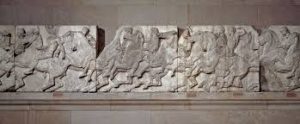Healing booboos since 1920, I’m sure most are familiar with the adhesive bandages: Band-Aids.
Introduced by Earle Dickson, the band-aid was invented for his wife Josephine who would always cut and burn herself in the kitchen. What Earle did was prepare ready-made bandages, which were pieces of cotton gauze on a strip of adhesive tape. The tape remained sticky because he covered them with crinoline, a fabric similar to tulle. This prototype allowed Josephine to dress her own wounds without additional assistance. Earle pitched his invention to the company he worked for at the time, Johnson & Johnson. The company president, James Wood, picked up his prototype and began to market the product.
Unlike today, they were made by hand, around 3 inches in width and 18 inches in length. Additionally, the sales weren’t too great either, in their first year they sold about only $3000 worth. Mainly because people didn’t know how to use them. However, Johnson & Johnson did achieve progress. Sales began to increase after the company employed salesman to introduce their new invention to doctors, pharmacists, butchers, and even the Boy Scouts.
In 1924, J&J brought in machines to mass-produce the bandages. These machines made bandages ¾ inches wide and 3 inches long. The wrappers were also being introduced for convenience, with little red strings used to open the product. They kept improving the bandages, selling them in different sizes and adding holes in the gauze pads for aeration and faster healing.
Two years later in 1926, J&J upgraded their packaging to the iconic metal tin over the cardboard boxes they’ve been using. From the immense success of Earle’s invention, he was rewarded by being named vice president and even elected to J&J’s board of directors. All thanks to Josephine’s poor cooking skills.
Sources:
https://ourstory.jnj.com/first-band-aid-brand-adhesive-bandage
https://www.jnj.com/our-heritage/18-facts-about-the-history-of-band-aid-brand-adhesive-bandages






